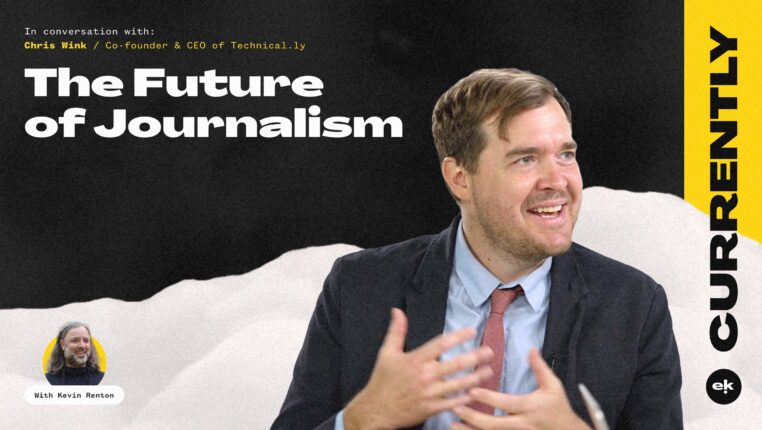If you work in higher education, you’re undoubtedly aware of the issues posed by a system that is notoriously decentralized. According to our 2017 State of Higher Ed Digital Marketing Survey, 53% of respondents who reported that their university or college blogged claimed to have 6 or more blogs, and 78% percent of those respondents claimed to have a decentralized content governance model. That’s a lot of content in a lot of different places.
In this decentralized environment, many schools have a small core web team that is responsible for building initial websites based on the individual needs of each department, school, club, or group within a college or university. In some instances, teams will decide to outsource this work to agencies based on their unique goals and budgets. From there, each team is trained on how to make updates to the CMS on their own, and the web team continues to repeat this process for other groups on campus.
Because each unit independently decides what their needs and wants are, they aren’t required to consider the larger objectives of the umbrella site. This can result in an inconsistent voice across school properties, poor navigation schemes, and disjointed marketing efforts.
While the idea of such a decentralized system where each group controls their space and content on the web may seem like the best approach for schools with smaller ecosystems or that are new to building an ecosystem, this model doesn’t scale well with expanding web efforts.
The Pitfalls of Decentralization
The effects of website decentralization can often be felt by a wide range of marketing, enrollment management, information technology, or university development professionals. This issue extends well beyond multiple departments and colleges, and can even impact specific offices, such as Alumni Relations and Development. For example, a school’s Alumni Relations office will frequently have separate websites and databases for the alumni magazine, giving portal, and specific fundraising campaigns. Although such a system may work for some, it can also lead to duplicate content, missed opportunities, and more time spent managing the various properties.
A decentralized system lends itself to an inconsistent and frustrating experience for users and site administrators alike. Because each unit independently decides what their needs and wants are, they aren’t required to consider the larger objectives of the umbrella site. This can result in an inconsistent voice across school properties, poor navigation schemes, and disjointed marketing efforts.
Decentralization also creates a gap in accountability for the main site’s overall success or failure. With so many individuals in control, global decisions become more difficult to implement, and longer timelines become the norm.
With a centralized solution, the web team is able to take ownership over the user experience, prioritizing requests and using their expertise to maintain a web presence that is consistent in quality across the board.
A Centralized Content Hub Solution
If this sounds like your college or university – fear not. There is a better system for creating, sharing, and repurposing content for various audiences across your university. A centralized content hub can help you add and share content across your school’s entire ecosystem; facilitating a more robust content strategy that will attract and engage alumni, donors, faculty, and the broader public.
Imagine the time you could save if all of your school’s content assets – blog posts, student profiles, alumni highlights, research updates, etc. – were accessible in one place. A centralized CMS content hub, hosted within a content management system like WordPress or Drupal, will allow you to organize your content all in one place.
Utilizing this hub, various university websites can be seamlessly integrated into one central solution. For instance, your university’s giving and alumni association websites can both be incorporated into the central hub. This will allow you to take full advantage of existing content by allowing various teams within the university to search for content in the hub, edit it for their specific needs, and publish it to whichever platform they choose with a link back to the original source.
Benefits of a Centralized System
Not only will the content hub be easier for you to use and maintain in the long run, but it will also help you provide the best possible user experience to the students, alumni, donors, and staff visiting your various websites. This infrastructure will help website visitors connect with your school through a more consistent, holistic experience.
A single content hub where content can be added and shared across the entire ecosystem can also help support your marketing efforts going forward by allowing you to track visitors’ behaviors between sites. Used in conjunction with a marketing automation platform such as HubSpot, Pardot, or Marketo, this will allow you to show relevant content to visitors based on their interests and online behaviors. This will ensure that each visitor’s experience feels relevant, personalized, and useful.
Related – Website Personalization for Higher Ed: Why, Who, and How
Discover how schools can speak to students on a much more personal level, using targeted messages designed to increase engagement and guide them down their own unique path towards enrollment.
Internally, a centralized solution will give site admins the ability to enter content into a single system and subsequently publish it to different properties. This solution is designed for scalability and organization, ensuring content can easily be browsed and repurposed. For developers, a common code base makes the content hub easier to maintain in the long run.
Of course, this isn’t a one-size-fits-all solution. This may not be the best way to proceed if your school is large with multiple departments that have very disperse content needs. But if you’re a small-to-midsize school with a desire to streamline your digital communications processes, a centralized content hub may make sense for you and your team.
Download our guide to Building Your Alumni and Donor Relations Digital Ecosystem to learn more about what the implementation process could look like at your school.




